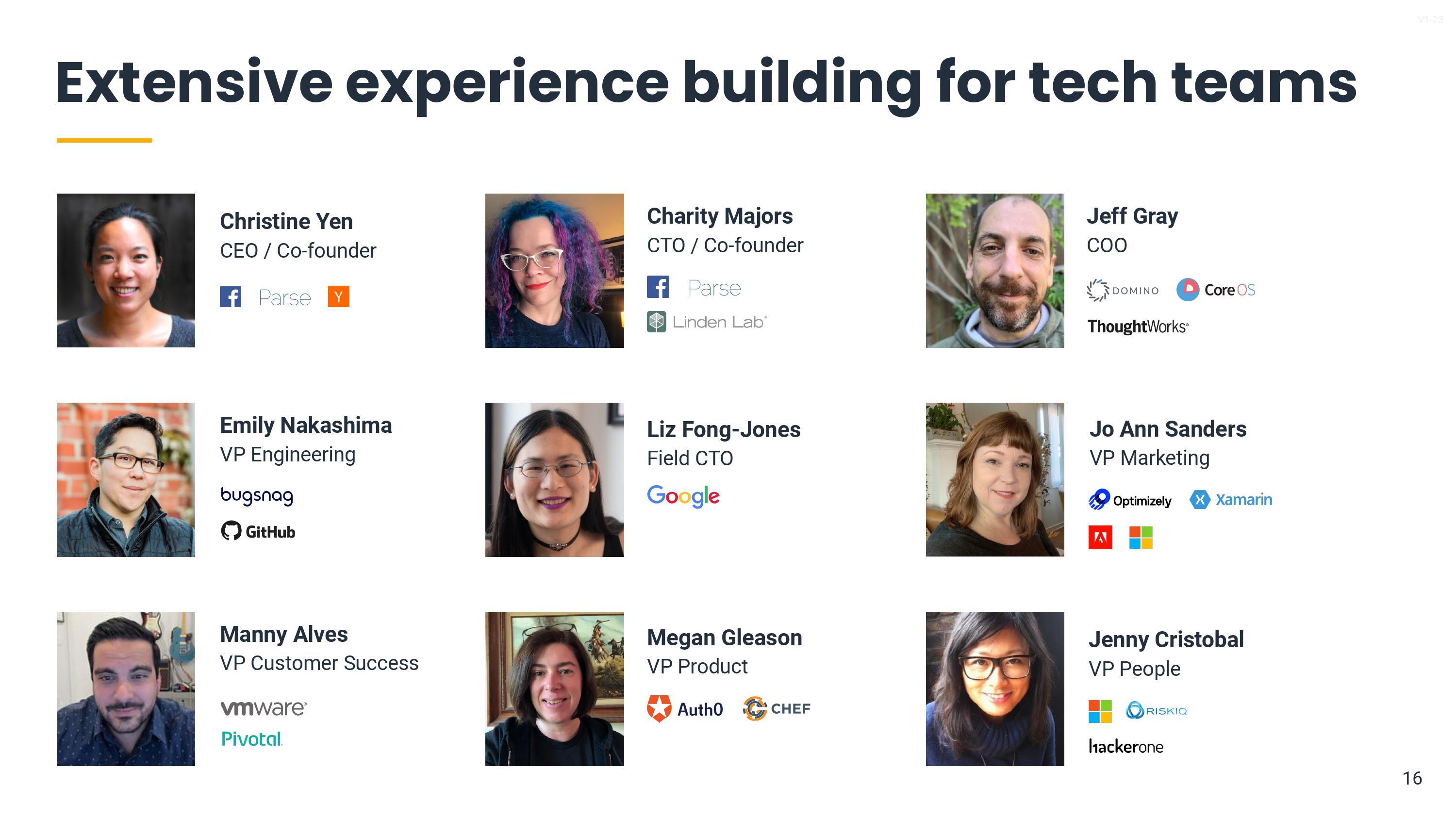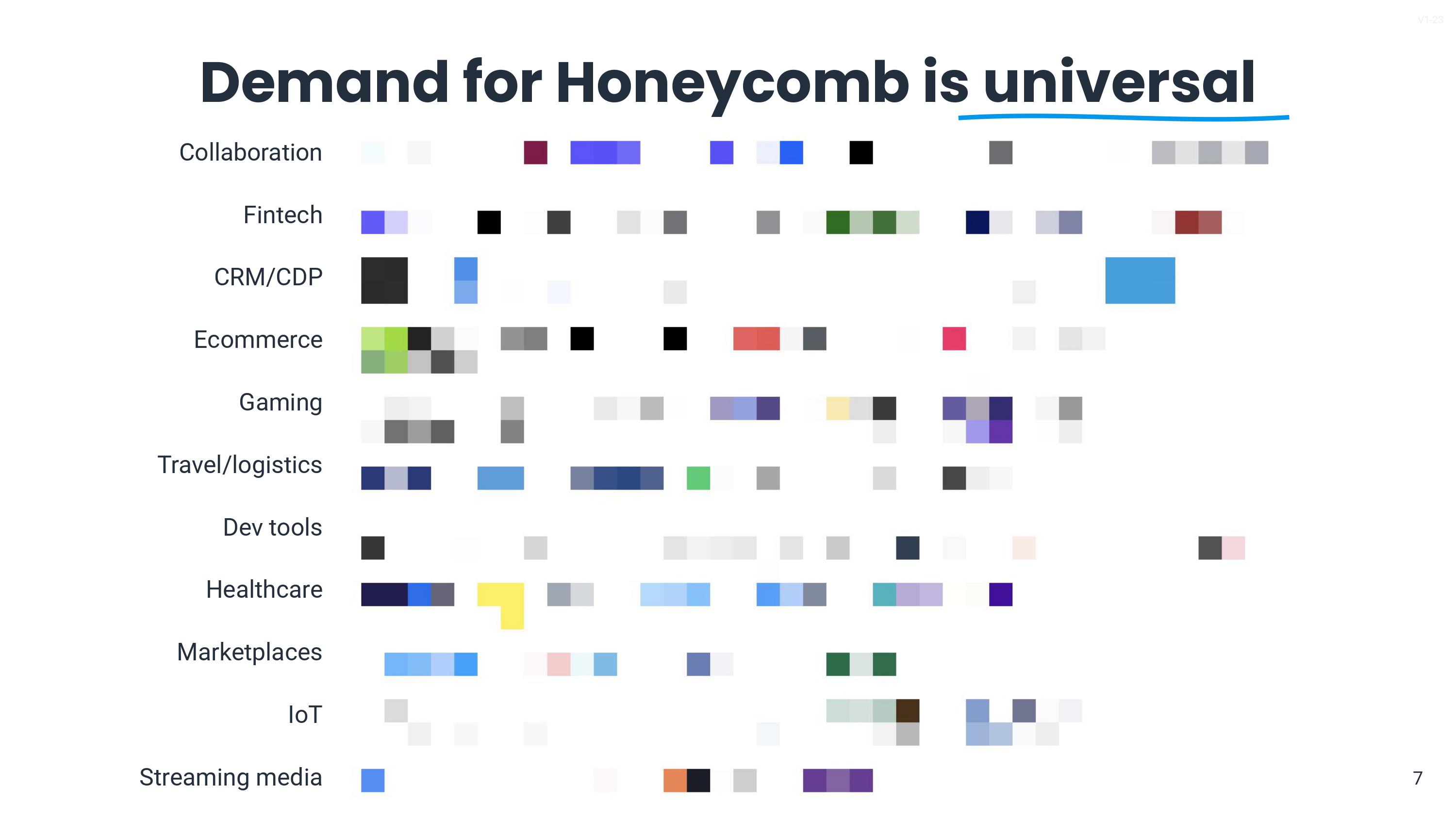Sample Series D pitch deck: Honeycomb’s $50M deck

Honeycomb raised $50 million to make the new landscape of platforms and services more observable. Its long-term goal is to make life easier for people operating large software platforms.
“What we saw in 2015 and 2016 is the world moving in a direction where that complexity was unavoidable, whether in a heightened interest in being able to do things like breakdown by customer ID or this exploding complexity that was about to come onto the scene driven by Kubernetes, microservices and containers. We [believed] the world [was] going to need a tool like this that allows users to have both speed and flexibility,” Christine Yen, co-founder and CEO at Honeycomb, told TechCrunch in a previous interview.
I find this fascinating and was excited to go through the company’s pitch deck to learn more.
We’re looking for more unique pitch decks to tear down, so if you want to submit your own, here’s how you can do that.
Slides in this deck
The company didn’t remove any slides from its 18-slide deck, but it redacted revenue numbers and blurred customer and competitor logos.
This is a quick breakdown of the honey Honeycomb used to land $50 million in the hive:
- Cover slide
- Data summary snapshot slide
- Problem slide
- Solution slide
- Competitive landscape slide
- Product category overview slide
- Customer landscape slide part 1 (mostly redacted)
- Customer landscape slide part 2 (mostly redacted)
- Market positioning slide
- Value Proposition slide
- History/product timeline slide
- Go to market interstitial slide
- GTM: Land-and-expand approach slide
- GTM: Gaming vertical slide
- Going Forward interstitial slide
- Team slide
- The Ask slide
- Closing slide
Three things to love
Honeycomb is building a product that — based on its traction alone — is clearly needed, and it does a good job weaving its story.
This is how you do an “ask” slide!
![[Slide 17] Look at that! Yess!! Image Credits: Honeycomb](https://techcrunch.com/wp-content/uploads/2023/04/HoneycombSeriesDPitchDeck-slide-0017.jpg)
[Slide 17] Look at that! Yess!! Image Credits: Honeycomb
One of my pet peeves about slide decks is that the vast majority of founders get this slide wrong. It’s a breath of honey-scented air to see a company get it so right. Honeycomb clarifies the need ($50 million) and precisely what it will do with the money: Runway into 2026, a specific ARR goal and the option to focus on growth or stabilize into a running, profitable business. It also states IPO readiness as a goal (which is a little fuzzy; does that mean it wants to be ready for the IPO and then raise another round to do the IPO, or does the $50 million include all the housekeeping that’s needed to complete an initial public offering?), along with some slightly ambiguous, but clear-enough goals around channels and product.
I’d use this as your baseline for an “ask” slide. Be clear, be focused. Show what your fundraise will accomplish. (While the company mentions 2026, the runway isn’t the main focus of the slide, which is exactly how it should be.)
I wish more team slides looked like this, but …
OK, for a team slide, this isn’t great: It doesn’t explain why all of these people have a founder/market fit, and it doesn’t show why this team is uniquely positioned to drive Honeycomb to the next level. Specifically, for a round that suggests an IPO might be imminent, I want to know that at least some of the folks in leadership know how to pull that off or at least have support from people who have IPO experience.

[Slide 16] Team slide! Image Credits: Honeycomb
And yet, this team is refreshing in how diverse it is, which is sadly quite rare in the startup world, and especially in B2B enterprise SaaS businesses. Having a diverse leadership team doesn’t happen by accident; it’s a concerted effort in hiring and team building. Investors, take notice.
Of course, this isn’t an easy “fix.” If you’re putting together a slide deck to raise your next round, and that’s the first time you realize your team slide is filled with Stanford-educated white dudes, well, no amount of creative storytelling can save you. It’s essential to think about the type of company you want to build and put into the world. As a startup founder, you get to make choices about the kind of org you want to create.
So, who needs this anyway?
For folks who aren’t steeped in development and software, a software engineering observability platform may seem very niche indeed. Blurred-out logos be damned, this slide does a great job at telling the story:

[Slide 7] Excellent storytelling means that you don’t even really need to see the logo. The point is made. Image Credits: Honeycomb
Trust me when I say that there are some serious, well-known brands on this slide. But even with the logos blurred out, this slide does a magnificent job telling the company’s story: It shows the breadth of companies and sectors that work with Honeycomb. “Who is this product for?” is a question all investors will ask, and with this slide, it’s clear that the answer is: mostly everyone.
Recent Posts
- Bank Mandiri Optimistis Likuiditas Tetap Terjaga
- TNI Tembak 2 Anggota OPM yang Serang Pos Paro di Nduga Papua
- MSC Cruises unveils summer 2024 stay and cruise programme
- Global Hotel Alliance Celebrates 20th Anniversary at IHIF EMEA in Berlin Demonstrating Its Enduring Value for Independent Hotel Brands
- First known test dogfight between AI and human pilot carried out, US military says | Science & Tech News
Recent Comments